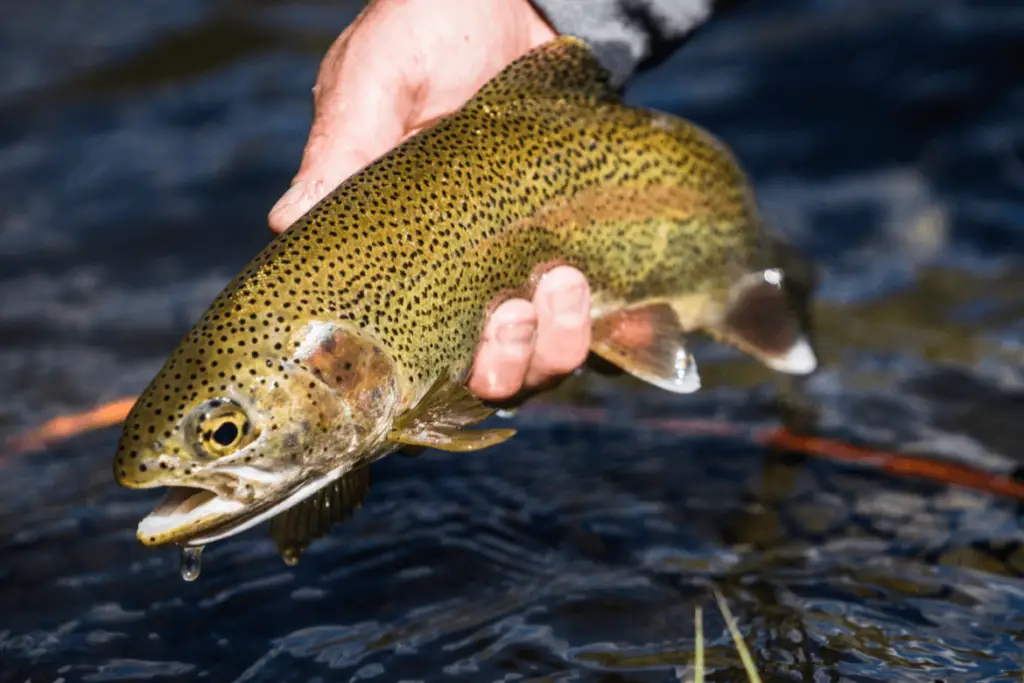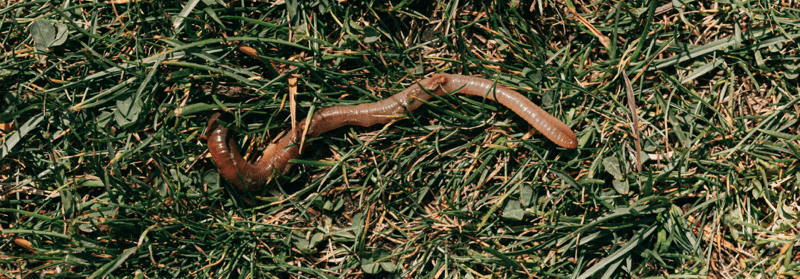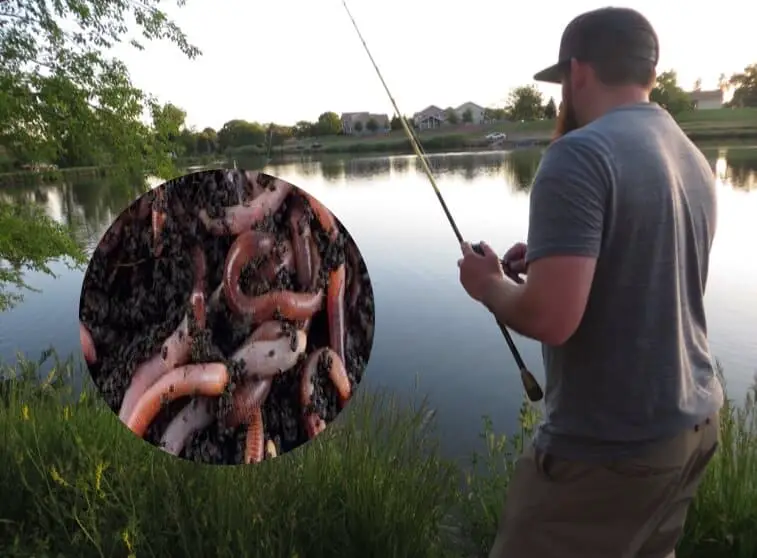Freshwater gamefish seem to really like worms. Live bait might be one of the best types of bait to catch freshwater fish, but it may become overwhelming when choosing the right worm for your day out to the lake. What type of worms do you buy and more importantly, what types of fish will you be able to hook on your line?
Just about any freshwater gamefish will gobble up a worm. Catfish, bluegills, bullheads, striped bass, rock bass, trout, crappie, and yellow perch are the most common fish to catch when using a worm, whereas pike, and carp don’t seem to be as interested in worms, but they can certainly still work.
Countless fishermen have probably wondered why fish are so attracted to worms when they certainly don’t naturally encounter many worms without humans being involved. If you are curious to know which worms work best, then this is written just for you!
Finding the Right Types of Fishing Worms
Fishing with worms is generally popular. If you are an old fisherman, the chances are high you’ve dealt with your fair share of worms, but fishermen who are just starting may be slightly lost with the broad selection of worms to choose from. Knowing what type of fishing worms are available, and more importantly, which ones to buy is not common knowledge to all.
Worms aren’t only good fish bait; they are probably the best bait a fisherman can find. Worms are a tried-and-true bait. There are all types of fishing worms for all types of situations. The type of fishing worms to buy will solely depend on what you are looking to catch.
Why do Fish Like Worms?
Worms don’t necessarily exist in water, but fish can’t resist them! Fish have an instinctual feeding response. When triggered by the natural scent and erratic motion of a wiggling worm, fish are compelled to bite.
Fish You Can Expect to Catch With Worms

Here are the species you can expect to catching while fishing with worms.
Trout
Many anglers have been using worms to catch trout for a very long time. Trout love worms especially during the early season, when the water is still cold. Next time you are bait fishing for trout try using worms and you’ll give yourself a great chance to catch a variety of trout species.
Bass
Both smallmouth and largemouth bass eat worms; that is if they aren’t beaten by a school of smaller fish like bluegills. However, it is important to note that a largemouth bass is more likely to be caught on a large nightcrawler than on a smaller red wiggler. You might have to go catch quite a few small fish before landing that bass.
Bluegill
Whether using red worms, nightcrawlers, or other species, they are without a doubt one of the best bluegill baits! When using worms, it’s important to use small pieces to catch a bluegill. You are almost guaranteed to get a bite from bluegill.
Crappie
Worms work great on small fish like crappie. Crappie can’t get enough of them! If you are out to catch crappie, you would be better off cutting the worm up into small pieces.
Catfish
Catfish are known to be scavengers and sight feeders, making worms attractive to them. Worms have been known to attract catfish better than many other lures.
Yellow Perch
A mature yellow perch tends to feed on larger prey, but a younger yellow perch won’t be able to resist a mealworm.
The Best Types of Worms for Fishing

Nightcrawlers
Nightcrawlers are simply super-sized earthworms, that range in color from muddy brown to grey. They are the ultimate of all fishing worms. They exhibit a lot of spasms, making them stand out even more in water. Nightcrawlers are known as the go-to worm for hooking a big fish. That being said, when catching smaller fish, you do not have to fish with an entire worm. Breaking off pieces prevents fish from stealing your bait and as a bonus, you waste less money.
Best fish to catch:
- Bass
- Trout
- Walleye
- Crappies
Mealworms
Mealworms are not really worms, they are actually larvae of a mealworm beetle; however, fish still love them! Mealworms white with brown patches. They are very small and are an excellent choice for catching smaller fish. You can use both live or dried mealworms, but live ones are by far the best option. You’ll want to use a small hook when using these worms, and try to fit as much of the worm onto the hook, or fish will steal them right off your hook.
Fish find mealworms so tasty, that you might just be lucky enough to hook a larger fish.
Best fish to catch:
- Trout
- Bluegill
- Crappie
- Perch
- Panfish
Red Wigglers
If you have ever seen a reg wiggler, you’ll know exactly where it gets its name from! They are reg and very wiggly. Red wigglers come in all sizes, but are generally smaller than other worms, making them good for small fish. These worms are very hard, making them a popular choice.
Best fish to catch:
- Trout
- Catfish
- Panfish
- Crappie
Waxworms
Waxworms are also larvae but of wax moths. they are short, soft, and have a creamy white color. Waxworms are one of the only worms available during ice fishing. They are high in fat, making them a special treat.
Best fish to catch:
- Panfish
- Perch
- Crappie
Bloodworms
Bloodworms are generally fairly large worms and therefore used to catch larger fish. Bloodworms can be used to catch both saltwater and freshwater fish. Be warned that these worms have teeth and are not afraid to bite back when being hooked. Bloodworms are a messy bait but boy do fish love them!
Best fish to catch:
- Striped bass
- Catfish
- Bream
- Perch
- Winter flounder
Butter Worms
Butter worms are very similar to waxworms. The big difference between the two is that butter worms have a lower fat content, making them less appealing. On a more positive note, butter worms have a fruity odor that attracts many fish.
Best fish to catch:
- Trout
- Panfish
Best worms to use for fishing:
How to Properly Rig a Worm to Catch Fish
The art of hooking a fish with a worm may sound deceptively simple. We will take a look at several methods of hooking your worm. A worm on your hook is no good if it wiggles off with every cast.
- Grab a worm and a hook. Before going fishing, dig up some worms in your backyard or go get them at the store. Be sure to keep them in a container full of dirt.
- Make sure your hands a little dirty before hooking your worm. Most fish use smell as their primary sense for finding prey. The dirt will help to cover up your human scent.
- Make sure your hook is well-secured to your fishing line. (See How to Tie a Fishing Knot.).
- Stick the barbed end of the hook about 0,2inches from the end of the worm, and pass it all the way through.
- Push the worm to the top part of the hook, and hook the worm on its long end about another 3-4 times depending on the size of the worm. Be sure to leave a small piece of the end hanging, so that the worm can still wiggle when cast into the water.
- Adding a spinner or jig can do wonders to increase the movement of your worm. This is a great option if you are using store-bought or dead worms. https://youtu.be/ISsEmZx43Vs
- Cast! Reel your line in approximately every 20 minutes if you aren’t getting any bites. Some mischievous little fish may have stolen your worm off your hook without you noticing.
Conclusion
There is a lot to figure out when you start fishing with worms, but it’s actually simple. Make sure you know what fish species you are trying to catch when rigging up your worm. Worms are excellent when trying to catch fish like catfish, bluegills, bullheads, bass, trout, crappie, or yellow perch. Even the fish that have been hooked a dozen times will still go for the worm. The perceived reward always outweighs the risk.

